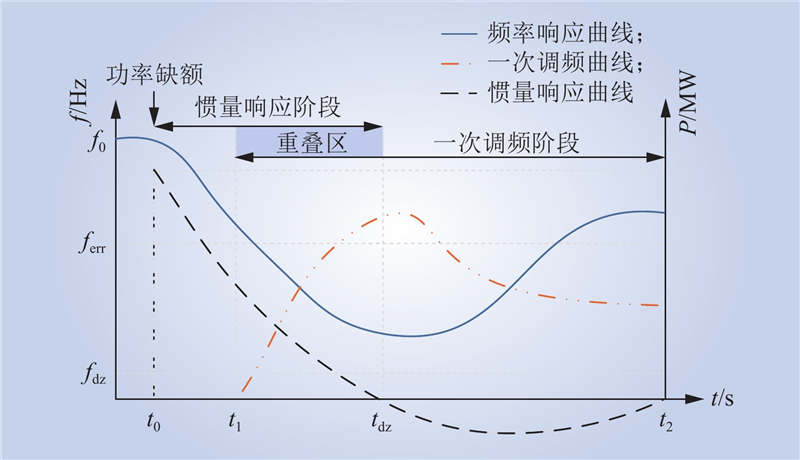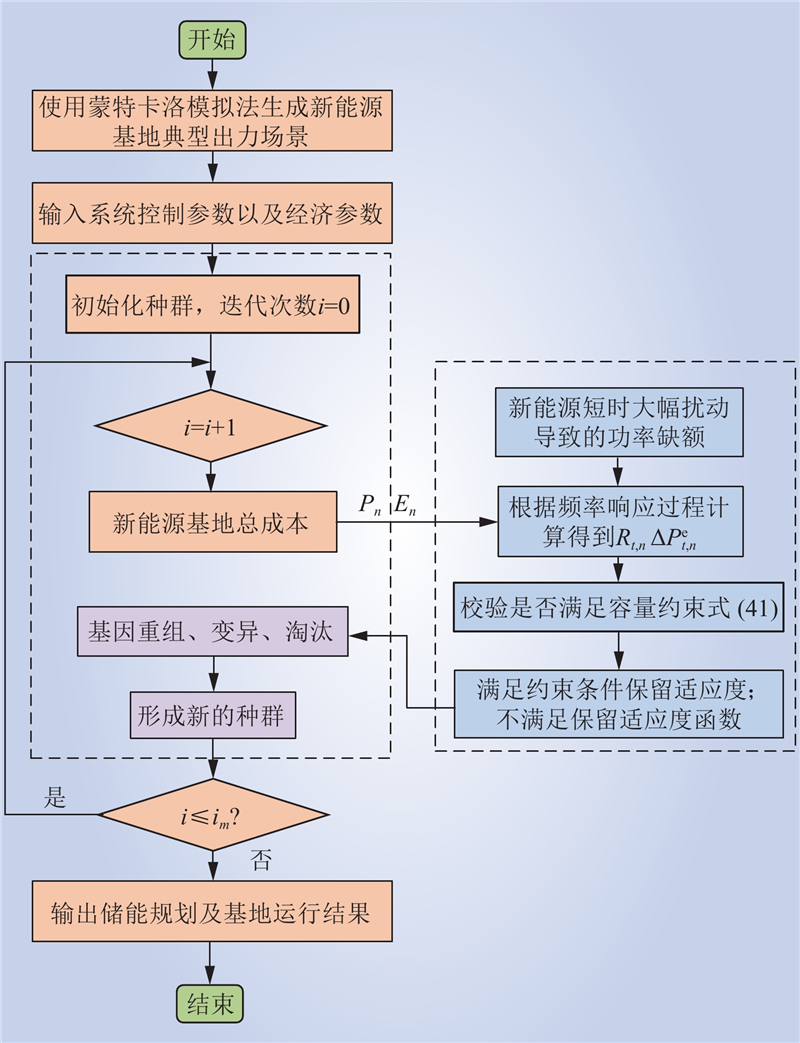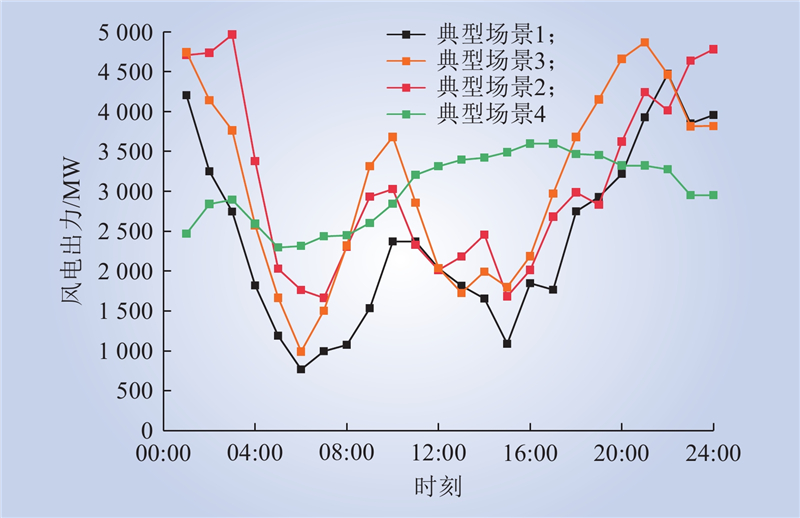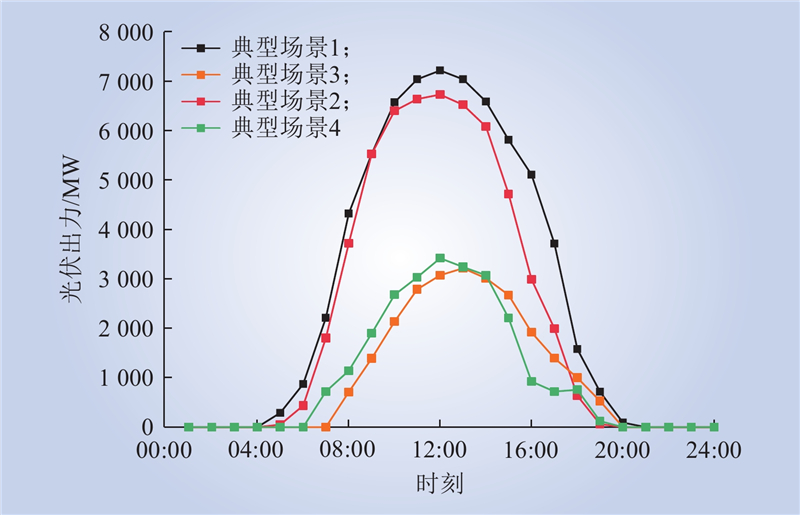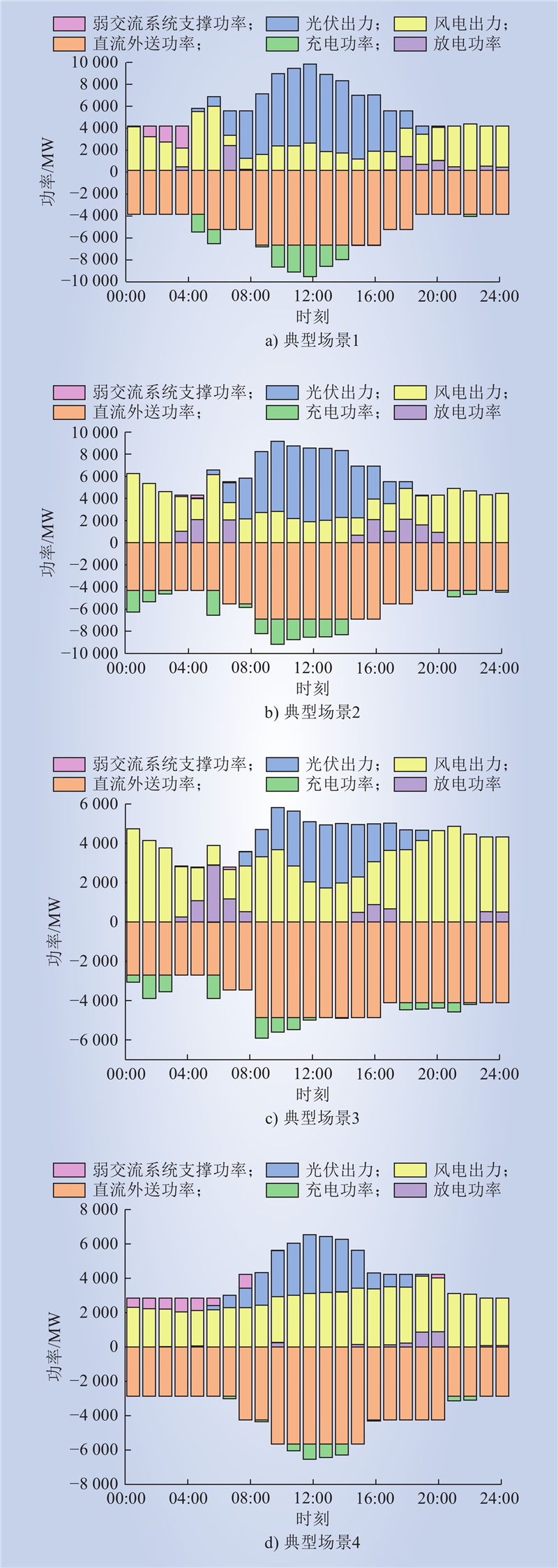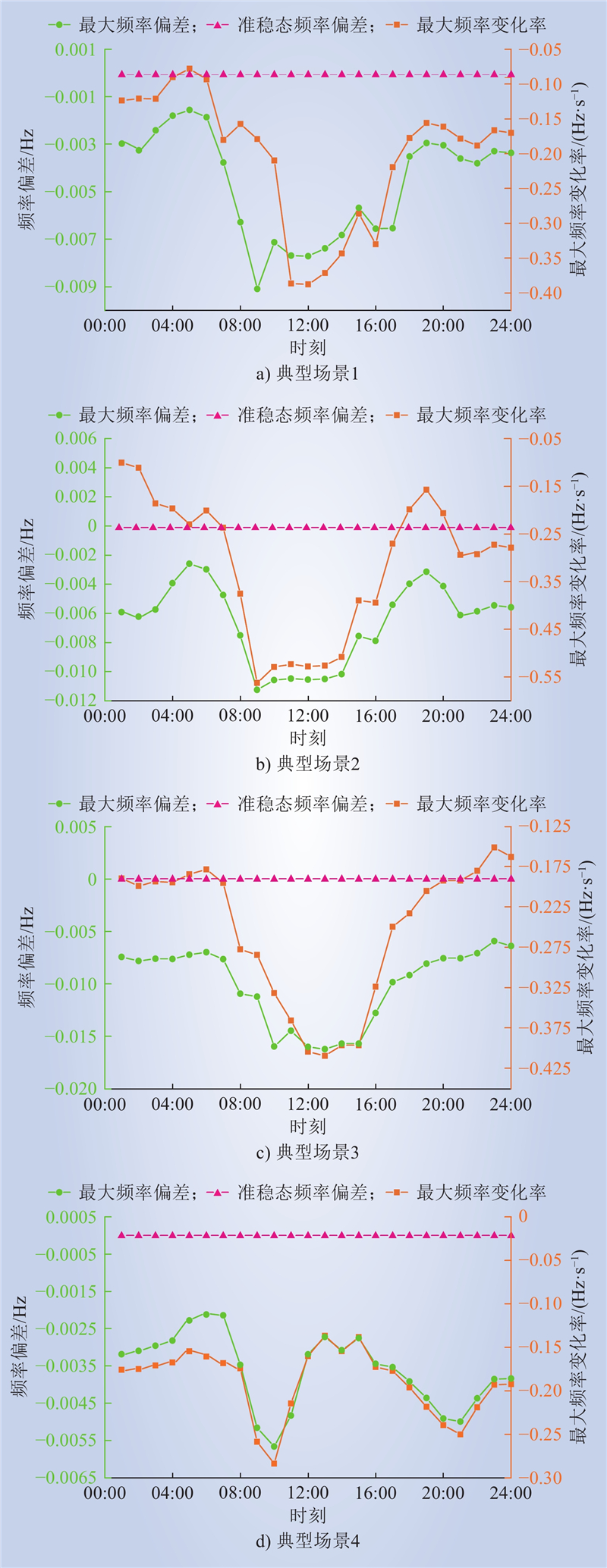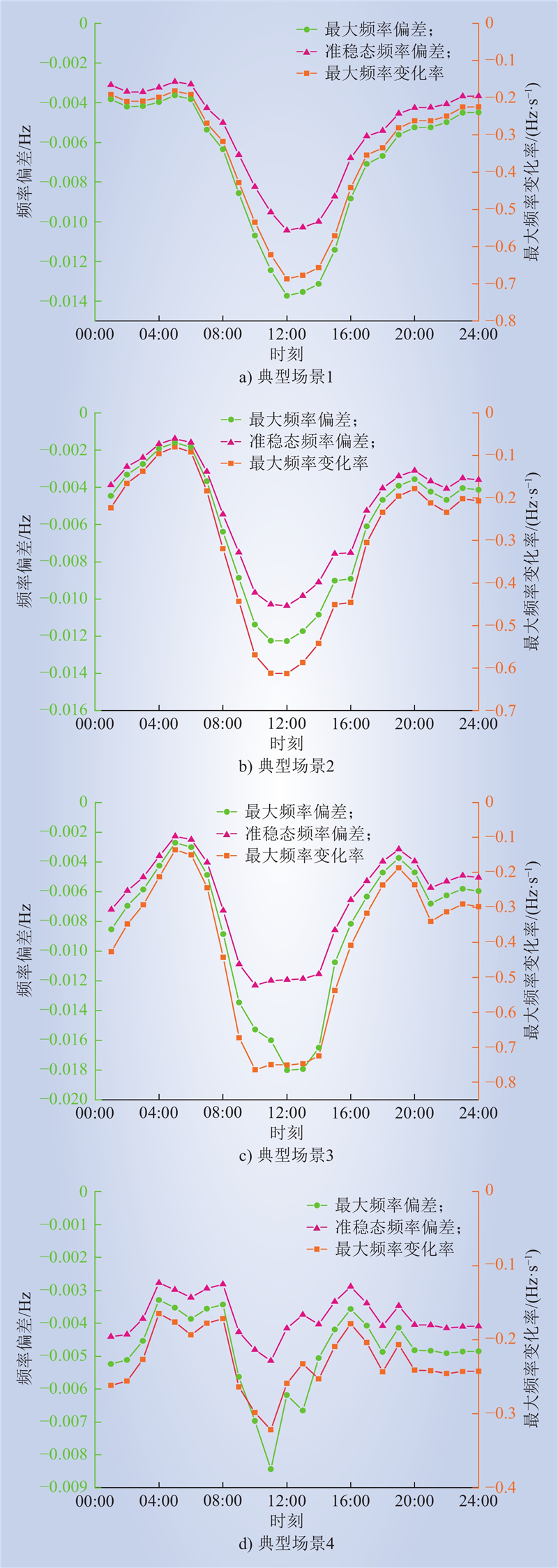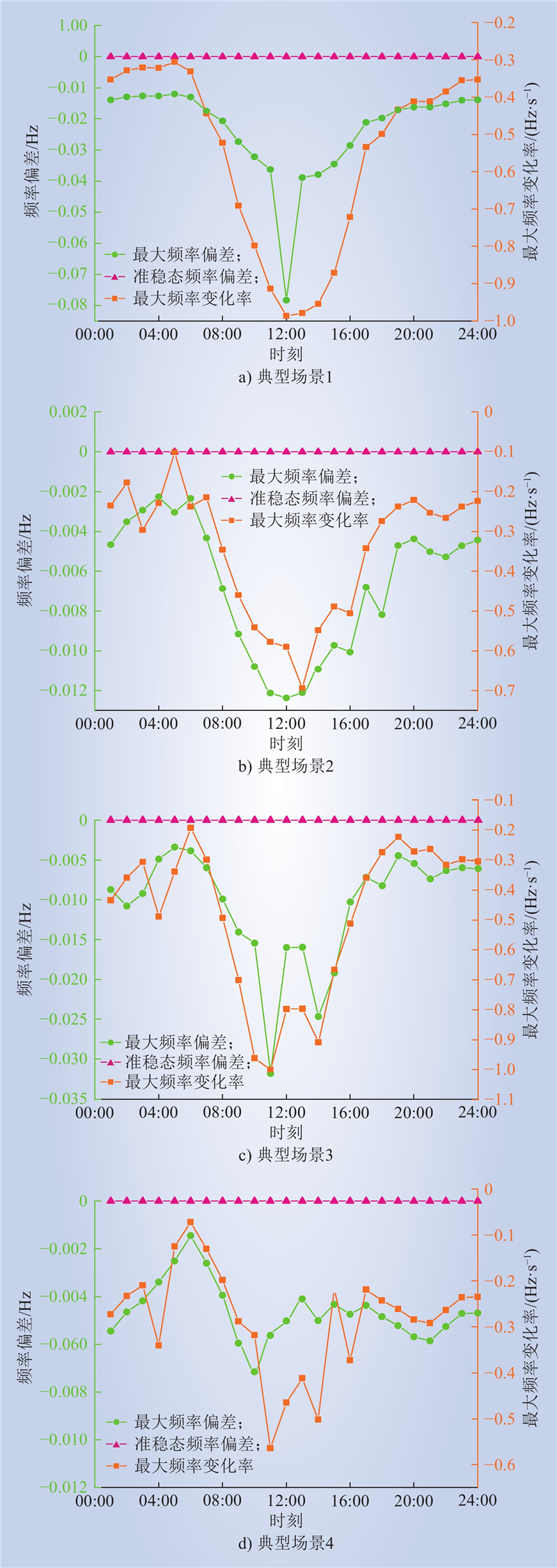| 1 |
肖湘奇, 邓汉钧, 邹晟, 等. 基于RBF与AHFS的光储VSG虚拟惯量灵活控制研究[J/OL]. 中国电力, 1–12 [2025-04-09]. http://kns.cnki.net/kcms/detail/11.3265.tm.20250226.1042.011.html.
|
|
XIAO Xiangqi, DENG Hanjun, ZOU Sheng, et al. Research on virtual inertia flexible control of photovoltaic storage VSG based on AHFS and RBF[J/OL]. Electric Power, 1–12 [2025-04-09]. http://kns.cnki.net/kcms/detail/11.3265.tm.20250226.1042.011.html.
|
| 2 |
张玉敏, 孙鹏凯, 吉兴全, 等. 考虑扩展碳排放流的综合能源系统低碳经济调度[J]. 电网技术, 2023, 47 (8): 3174- 3191.
|
|
ZHANG Yumin, SUN Pengkai, JI Xingquan, et al. Low-carbon economic dispatch of integrated energy system with augmented carbon emission flow[J]. Power System Technology, 2023, 47 (8): 3174- 3191.
|
| 3 |
徐鹏, 郭新元, 赵伟, 等. 功率与频率耦合下100%新能源电力系统的潮流分析模型[J]. 智慧电力, 2024, 52 (12): 73- 79, 87.
|
|
XU Peng, GUO Xinyuan, ZHAO Wei, et al. Power flow analysis model of power system with 100% renewable energy under power-frequency coupling[J]. Smart Power, 2024, 52 (12): 73- 79, 87.
|
| 4 |
李雪, 季寒松, 张儒峰, 等. 计及多类型微网响应特性的城市配电系统分布式优化调度[J]. 电力系统自动化, 2022, 46 (17): 74- 82.
DOI
|
|
LI Xue, JI Hansong, ZHANG Rufeng, et al. Distributed optimal scheduling of urban distribution system considering response characteristics of multi-type microgrids[J]. Automation of Electric Power Systems, 2022, 46 (17): 74- 82.
DOI
|
| 5 |
李晖, 刘栋, 秦继朔, 等. 考虑风光出力不确定性的新能源基地直流外送随机规划方法研究[J]. 电网技术, 2024, 48 (7): 2795- 2803.
|
|
LI Hui, LIU Dong, QIN Jishuo, et al. Stochastic planning method for UHVDC transmission of renewable energy power base considering wind and photovoltaic output uncertainties[J]. Power System Technology, 2024, 48 (7): 2795- 2803.
|
| 6 |
袁海驰. 新能源基地共享储能规划配置研究[D]. 北京: 华北电力大学, 2023.
|
|
YUAN Haichi. Research on planning and sizing of shared energy storage in renewable energy bases[D]. Beijing: North China Electric Power University, 2023.
|
| 7 |
吕志鹏, 盛万兴, 刘海涛, 等. 虚拟同步机技术在电力系统中的应用与挑战[J]. 中国电机工程学报, 2017, 37 (2): 349- 360.
|
|
LV Zhipeng, SHENG Wanxing, LIU Haitao, et al. Application and challenge of virtual synchronous machine technology in power system[J]. Proceedings of the CSEE, 2017, 37 (2): 349- 360.
|
| 8 |
马速良, 武亦文, 李建林, 等. 提升电网可靠性的储能系统最优经济性规划方法[J]. 太阳能学报, 2024, 45 (2): 251- 262.
|
|
MA Suliang, WU Yiwen, LI Jianlin, et al. Optimal economic planning method of energy storage system to improve grid reliability[J]. Acta Energiae Solaris Sinica, 2024, 45 (2): 251- 262.
|
| 9 |
曹炜, 钦焕乘, 陆建忠, 等. 新型电力系统下虚拟同步机的定位和应用前景展望[J]. 电力系统自动化, 2023, 47 (4): 190- 207.
DOI
|
|
CAO Wei, QIN Huancheng, LU Jianzhong, et al. Orientation and application prospect of virtual synchronous generator in new power system[J]. Automation of Electric Power Systems, 2023, 47 (4): 190- 207.
DOI
|
| 10 |
刘钊汛, 秦亮, 杨诗琦, 等. 面向新型电力系统的电力电子变流器虚拟同步控制方法评述[J]. 电网技术, 2023, 47 (1): 1- 16.
|
|
LIU Zhaoxun, QIN Liang, YANG Shiqi, et al. Review on virtual synchronous generator control technology of power electronic converter in power system based on new energy[J]. Power System Technology, 2023, 47 (1): 1- 16.
|
| 11 |
刘鸿清, 张秀琦, 王立强, 等. 新能源场站惯量支撑与频率响应特性研究[J]. 内蒙古电力技术, 2024, 42 (4): 14- 22.
|
|
LIU Hongqing, ZHANG Xiuqi, WANG Liqiang, et al. Research on inertia support and frequency response characteristics in new energy stations[J]. Inner Mongolia Electric Power, 2024, 42 (4): 14- 22.
|
| 12 |
朱星旭, 韩学山, 杨明, 等. 含分布式光伏与储能配电网时变最优潮流追踪的分布式算法[J]. 中国电机工程学报, 2019, 39 (9): 2644- 2658.
|
|
ZHU Xingxu, HAN Xueshan, YANG Ming, et al. A Distributed algorithm for time-varying optimal power flow tracking in distribution networks with photovoltaics and energy storage[J]. Proceedings of the CSEE, 2019, 39 (9): 2644- 2658.
|
| 13 |
陈继开, 曾强, 辛业春, 等. 基于改进VSG的MMC-MTDC受端换流器二次调频控制策略[J]. 电网技术, 2020, 44 (4): 1428- 1436.
|
|
CHEN Jikai, ZENG Qiang, XIN Yechun, et al. Secondary frequency regulation control strategy of MMC-MTDC converter based on improved VSG[J]. Power System Technology, 2020, 44 (4): 1428- 1436.
|
| 14 |
SINHA M, DÖRFLER F, JOHNSON B B, et al. Uncovering droop control laws embedded within the nonlinear dynamics of van der pol oscillators[J]. IEEE Transactions on Control of Network Systems, 2017, 4 (2): 347- 358.
DOI
|
| 15 |
CHANDORKAR M C, DIVAN D M, ADAPA R. Control of parallel connected inverters in standalone AC supply systems[J]. IEEE Transactions on Industry Applications, 1993, 29 (1): 136- 143.
DOI
|
| 16 |
马铱林, 杨欢, 屈子森, 等. 改善虚拟同步发电机阻尼特性的设计方法[J]. 电网技术, 2021, 45 (1): 269- 275.
|
|
MA Yilin, YANG Huan, QU Zisen, et al. Design method for improving damping characteristics of virtual synchronous generator[J]. Power System Technology, 2021, 45 (1): 269- 275.
|
| 17 |
殷桂梁, 董浩, 代亚超, 等. 光伏微网中虚拟同步发电机参数自适应控制策略[J]. 电网技术, 2020, 44 (1): 192- 199.
|
|
YIN Guiliang, DONG Hao, DAI Yachao, et al. Adaptive control strategy of VSG parameters in photovoltaic microgrid[J]. Power System Technology, 2020, 44 (1): 192- 199.
|
| 18 |
ZHANG H B, XIANG W, LIN W X, et al. Grid Forming converters in renewable energy sources dominated power grid: control strategy, stability, application and challenges[J]. Journal of Modern Power Systems and Clean Energy, 2021, 9 (6): 1239- 1256.
DOI
|
| 19 |
邹蕴韬, 张海涛, 刘春阳, 等. 新型虚拟同步发电机控制方法及其暂态过程自适应控制策略[J]. 电网技术, 2018, 42 (3): 933- 943.
|
|
ZOU Yuntao, ZHANG Haitao, LIU Chunyang, et al. A control approach of novel virtual synchronous generator and an adaptive control strategy for its transient process[J]. Power System Technology, 2018, 42 (3): 933- 943.
|
| 20 |
刘彦军, 何维, 朱东海, 等. 基于二阶VSG的变换器频率支撑能力评估及提升方法[J]. 电力建设, 2024, 45 (11): 102- 113.
DOI
|
|
LIU Yanjun, HE Wei, ZHU Donghai, et al. Evaluation and improving method of frequency support of converters based on second-order VSG section[J]. Electric Power Construction, 2024, 45 (11): 102- 113.
DOI
|
| 21 |
冷若寒, 吴琛, 胡光, 等. 适用于并联构网型储能系统的协调有功控制策略设计[J]. 高电压技术, 2025, 51 (7): 3617- 3628.
|
|
LENG Ruohan, WU Chen, HU Guang, et al. Design of a coordinated active control strategy for parallel grid-forming energy storage system[J]. High Voltage Engineering, 2025, 51 (7): 3617- 3628.
|
| 22 |
闫志彬, 李立, 阳鹏, 等. 考虑构网型储能支撑能力的微电网优化调度策略[J]. 中国电力, 2025, 58 (2): 103- 110.
|
|
YAN Zhibin, LI Li, YANG Peng, et al. Optimal scheduling strategy for microgrid considering the support capabilities of grid forming energy storage[J]. Electric Power, 2025, 58 (2): 103- 110.
|
| 23 |
盛李龙, 许津铭, 李威, 等. 弱电网下跟/构网型变流器并联系统的阻抗频率耦合及稳定性分析[J]. 电力系统自动化, 2025, 49 (1): 27- 37.
DOI
|
|
SHENG Lilong, XU Jinming, LI Wei, et al. Impedance frequency coupling and stability analysis of parallel system of grid-following and gridforming converters in weak grid[J]. Automation of Electric Power Systems, 2025, 49 (1): 27- 37.
DOI
|
| 24 |
江叶峰, 夏宇翔, 施琳, 等. 基于频率空间特性和灵敏度分析的惯量配置方法[J]. 电力自动化设备, 2025, 45 (5): 209- 217.
|
|
JIANG Yefeng, XIA Yuxiang, SHI Lin, et al. Inertia allocation method based on spatial frequency characteristics and sensitivity analysis[J]. Electric Power Automation Equipment, 2025, 45 (5): 209- 217.
|
| 25 |
赵冬梅, 徐辰宇, 杜泽航, 等. 就地无常规电源支撑下考虑新能源基地频率稳定的储能优化配置方法[J]. 中国电机工程学报, 2024, 44 (24): 9691- 9706.
|
|
ZHAO Dongmei, XU Chenyu, DU Zehang, et al. Optimization configuration method for energy storage considering frequency stability of new energy bases without conventional power supply support on site[J]. Proceedings of the CSEE, 2024, 44 (24): 9691- 9706.
|
| 26 |
郝晓强, 刘文宇. 电池储能系统支撑电力系统频率调控策略研究[J]. 东北电力大学学报, 2023, 43 (5): 38- 42.
|
|
HAO Xiaoqiang, LIU Wenyu. Research on frequency regulation strategy of battery energy storage system supporting power system[J]. Journal of Northeast Electric Power University, 2023, 43 (5): 38- 42.
|
| 27 |
李国庆, 刘先超, 辛业春, 等. 含高比例新能源的电力系统频率稳定研究综述[J]. 高电压技术, 2024, 50 (3): 1165- 1181.
|
|
LI Guoqing, LIU Xianchao, XIN Yechun, et al. Research on frequency stability of power system with high penetration renewable energy: a review[J]. High Voltage Engineering, 2024, 50 (3): 1165- 1181.
|
| 28 |
张轶, 袁嘉伟, 汤波, 等. 基于GPCA-GA的架空配电线路动态增容热传感器配置方法[J]. 电力系统自动化, 2025, 49 (6): 187- 197.
DOI
|
|
ZHANG Yi, YUAN Jiawei, TANG Bo, et al. Thermal sensor configuration method for dynamic rating of overhead distribution lines based on gappy principal component analysis-genetic algorithm[J]. Automation of Electric Power Systems, 2025, 49 (6): 187- 197.
DOI
|
| 29 |
刘灏, 晁婉萌, 毕天姝. 考虑光伏不确定性的配电网谐波监测优化配置方法[J]. 电力自动化设备, 2024, 44 (12): 124- 131.
|
|
LIU Hao, CHAO Wanmeng, BI Tianshu. Optimal harmonic monitoring allocation method of distribution network considering PV uncertainty[J]. Electric Power Automation Equipment, 2024, 44 (12): 124- 131.
|



